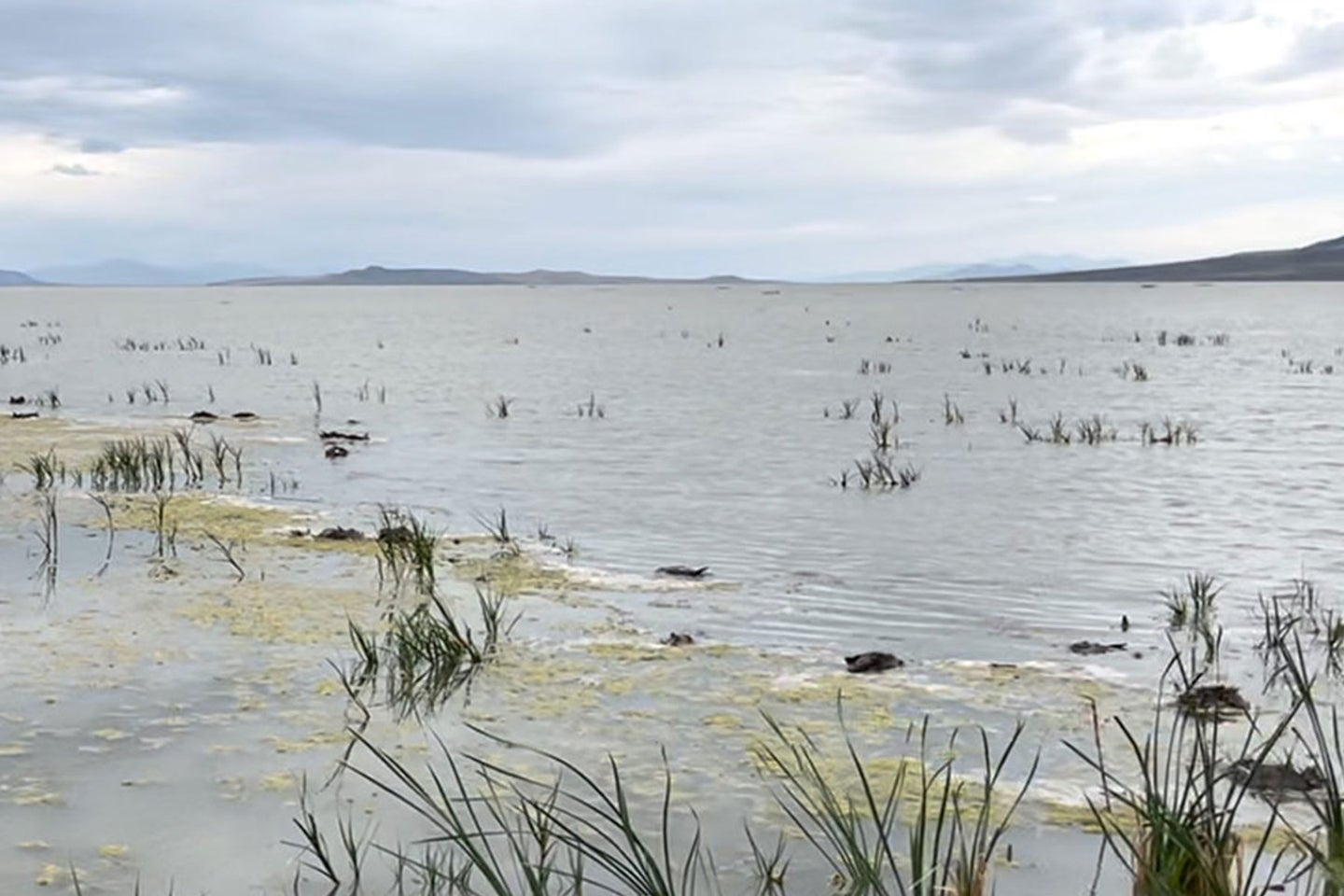Utah Warns Waterfowl Hunters After Thousands of Birds Die from a Disease Outbreak in The Great Salt Lake

Most of the dead birds were found at migratory bird refuges in the Bear River and Willard Bays. UDWR.
Back in mid-September, biologists with the Utah Department of Wildlife Resources (UDWR) began finding dead birds at waterfowl refuges in the northern part of the Beehive State. According to an October 5 press release, UDWR officials suspect that the birds died from a disease called avian botulism. With duck season now underway, the department is advising waterfowl hunters on what to do should they encounter sick or dying birds in the area.
Avian botulism outbreaks aren’t unheard of Utah, UDWR said in its press release. In fact, the disease tends to proliferate every year, usually between July and September when hot, rainy weather facilitates the growth of the anaerobic bacteria that causes botulism. But this year’s outbreak is particularly widespread.
“While the exact number of birds that died can’t be confirmed with certainty, DWR biologists estimate that tens of thousands were impacted,” UDWR said, “particularly in the areas of the Bear River Bay and Willard Spur Waterfowl Management Area.” The Bear River Bay Waterfowl Refuge and the Willard Spur Wildlife Management are in a northeastern finger of the Great Salt Lake—along the eastern edge of the Pacific Flyway and the western edge of the Central Flyway.
The Great Salt Lake itself is one of the most important breeding areas for waterfowl in the Intermountain West, according to Ducks Unlimited, serving as a staging ground for up to 4 million ducks and geese every year. But the lake has been plagued by habitat degradation in recent years, spurred on by by record-low water levels, warmer temperatures, urban sprawl, and unsustainable agricultural diversions.
“Our wetland managers strive to make adjustments in their water management practices on state waterfowl management areas in order to keep fresh water flowing, which can help minimize the impacts of avian botulism,” UDWR Waterfowl Coordinator Jason Jones said in the press release. “Many of the waterfowl management areas were originally created to reduce the botulism outbreaks that occurred along the river deltas a century ago.”
According to the United States Geological Survey (USGS), botulism is a natural toxin found in soil. There are several types of botulism toxins, and birds are impacted by a variety that doesn’t affect humans, the USGS states on its website. Once contracted, the toxins can override a bird’s nervous system and interfere with muscle movements. Typical signs in waterfowl and other bird species include weakness, lethargy, and the inability to hold up the head or fly.
Read Next: North American Waterfowl Survey Shows “Concerning” Mallard and Widgeon Declines
In light of the outbreak, the UDWR is encouraging hunters who encounter sick or dead birds to practice a few safety precautions. Most notably, hunters should try not to shoot birds that aren’t actively flying, the agency says. And avoid harvesting or consuming birds that appear sick or weak. Birds that are harvested should be cooked thoroughly in order to “denature the toxin” that leads to botulism. Hunters should also keep their dogs away from dead or visibly sick ducks or geese.
The post Utah Warns Waterfowl Hunters After Thousands of Birds Die from a Disease Outbreak in The Great Salt Lake appeared first on Field & Stream.
Articles may contain affiliate links which enable us to share in the revenue of any purchases made.
